The closeness between a measured quantity and the actual standard value (how good or bad a tool is at actually measuring something).
What is "accuracy"?
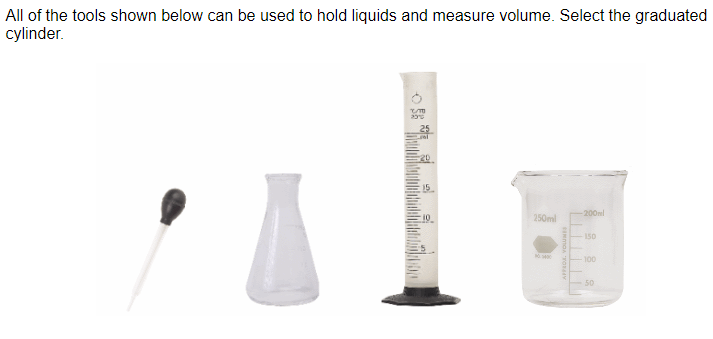
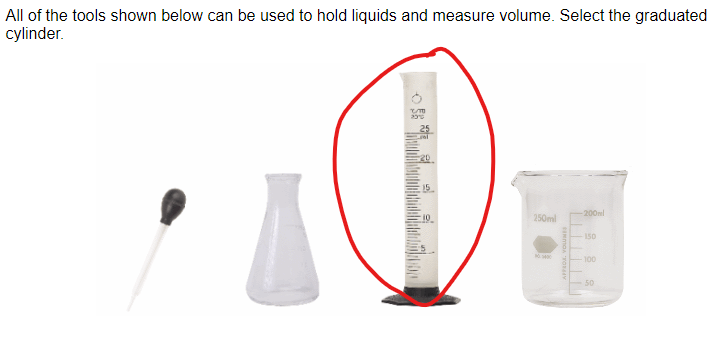
In the summer, laboratories can become hot and stuffy. Is it appropriate to wear flip-flops or sandals to lab to keep cooler?
A. Yes, if you wear socks.
B. No, only closed-toe shoes can protect your feet from spilt chemicals and broken glass.
C. Yes, if you are careful and do not spill any chemicals.
D. Sometimes, depending on the experiment being run.
B. No, only closed-toe shoes can protect your feet from spilt chemicals and broken glass.
Controlled experiments are experiments that have only one variable. All other factors in the experiment are kept the same.
Many hypotheses can be tested through controlled experiments, but it is not always possible to do a controlled experiment.
Which of the following hypotheses most likely cannot be tested with a controlled experiment?
A. Gravitational force is affected by both mass and distance.
B. In the wild, chimpanzees form social groups composed of 10 to 20 individuals.
C. A flowering plant will produce more fruit when treated with phosphate powder.
D. Ultraviolet radiation can cause genetic mutations in bacteria.
B. In the wild, chimpanzees form social groups composed of 10 to 20 individuals.
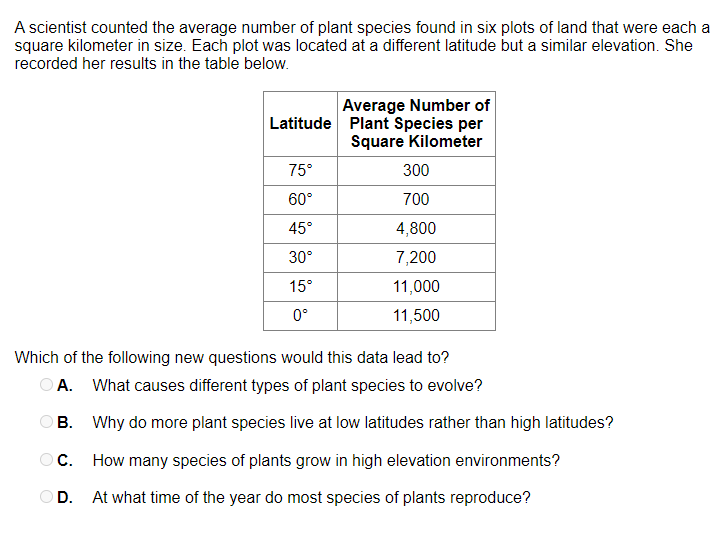
B. Why do more plant species live at low latitudes rather than high latitudes?
Bill likes to go to horse races. At the races, he notices that a certain breed of horse usually comes in first place, while a different breed of horse usually comes in last place. Which of the following is a testable scientific question that Bill could ask about his observations?
A. Do slower breeds of horses lack determination?
B. Are some breeds of horses prettier than others?
C. Do some horses want to win the race more than others?
D. Do faster breeds of horses have longer legs?
D. Do faster breeds of horses have longer legs?
The closeness between multiple different measurements of the same quantity (the reliability and consistency of a tool's measurements).
What is "precision"?
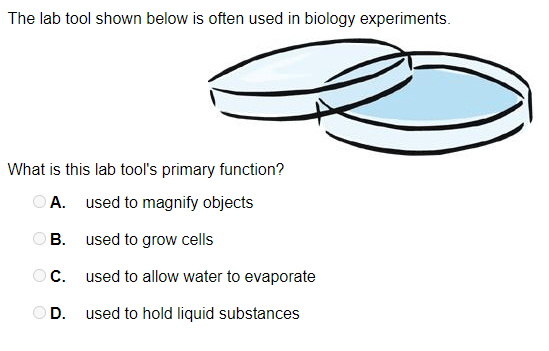
B. used to grow cells
David and his lab partner are dissecting an earthworm during biology lab. They are cutting the earthworm with a scalpel in order to examine the inside of the worm. Which of the following safety procedures should they follow while using the scalpel?
A. Always hold the organism in your hands while cutting.
B. Do not wear gloves to protect your hands.
C. Always cut away from yourself and others.
D. Do not clean the scalpel after the dissection is done.
C. Always cut away from yourself and others.
Sally wants to know why the leaves of her plants are turning yellow. She suspects it is because the plants are not receiving enough nutrients. To test her hypothesis, she devises the following experiment.
First, Sally obtains four identical green plants. Then, she places each plant in separate, but identical pots, with the same type and amount of soil. Although Sally gives each plant the same amount of water and Sun exposure each day, she changes the amount of fertilizer placed in each pot. Finally, she records the number of yellow leaves that she sees in each pot every day over the course of one month.
What is the dependent variable in Sally's experiment?
A. the amount of water
B. the amount of fertilizer
C. the number of yellow leaves
D. the type of green plant
C. the number of yellow leaves
A type of graph that allows us to demonstrate the relationship between two variables.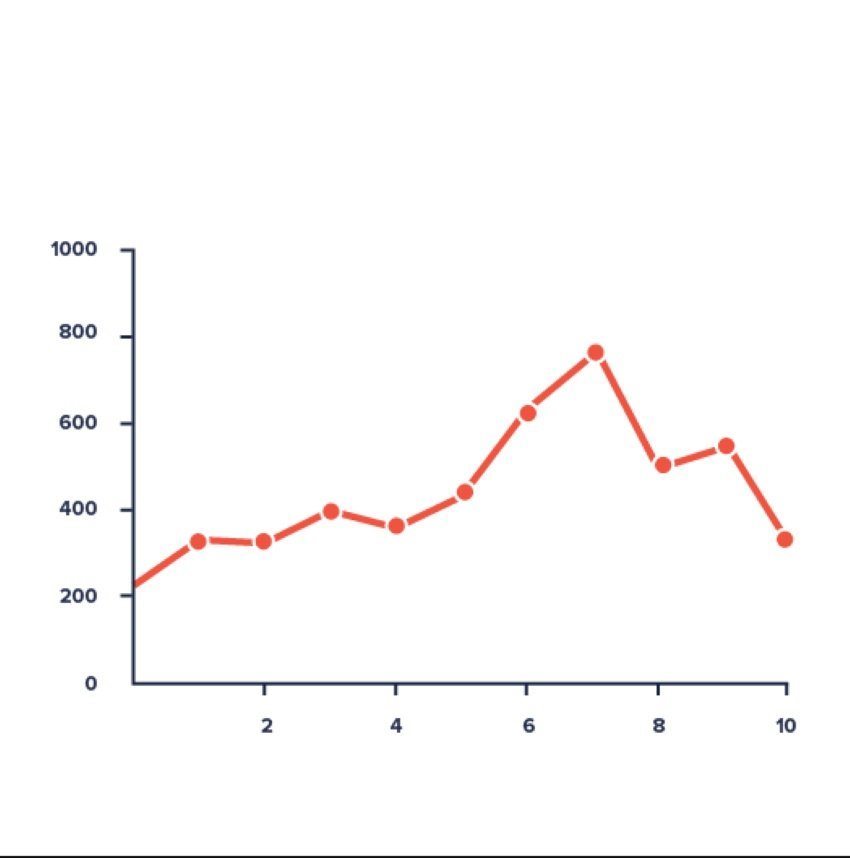
Line Graph
In which of the following cases should a scientist question the validity of a scientific conclusion?
I. if the instruments used in the experiment were miscalibrated
II. if the experiment did not include a control group
III. if the experiment included multiple trials
IV. if missing experimental data was estimated rather than measured
A. I, II, and IV only
B. I, II, and III only
C. I, II, III, and IV
D. I and III only
B. I, II, and III only
Inference

What is a "spring scale"?
What safety precaution should be undertaken before beginning any experiment in a lab?
A. Drink a high protein shake to prepare for the lab experiments.
B. Have your blood checked for viruses and bacteria.
C. Read all procedures thoroughly before entering the laboratory.
D. Wear safety goggles for twenty-four hours before entering the laboratory.
C. Read all procedures thoroughly before entering the laboratory.
Hayden has placed a cricket in a terrarium. He is interested in learning about cricket behavior. Which of the following is a question about cricket behavior that Hayden can answer through a scientific investigation?
A. Do crickets make better pets than lizards?
B. How will the cricket behave if another cricket is introduced into the terrarium?
C. Does a cricket prefer to live in the wild or in a terrarium?
D. How will the cricket feel if the terrarium is left in a dark room for several days?
B. How will the cricket behave if another cricket is introduced into the terrarium?
True or False: A measurement is a type of observation.
True
Suppose that a biochemist performs an experiment that indicates that the recommended daily allowance of Vitamin E (C29H50O2) should be doubled from 9.0 mg per day to 18.0 mg per day. The biochemist reports his results in a scientific journal.
Which of the following is a good question to ask about the experiment after reading the biochemist's conclusions?
- On what group(s) of people did the biochemist perform his experiment?
- Can Vitamin E be toxic to humans?
- Is Vitamin E a fat-soluble or water-soluble substance?
B. I only
The parts of an experimental investigation which can change (either because of the scientist or in response to something else changing).
Variables
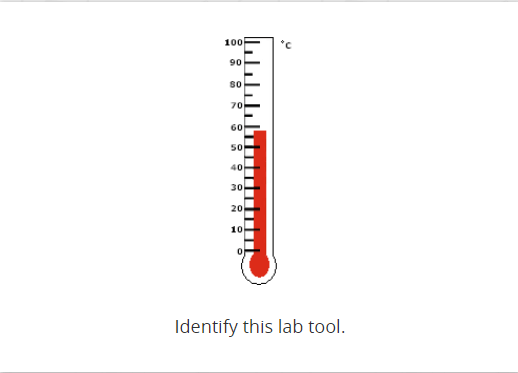
What is a thermometer?
From which of the following lab events will the goggles protect your eyes?
A. A scalpel slips and heads downward during a dissection.
B. A piece of loose sleeve is dipped into chemicals from an experiment.
C. A hot beaker is removed from the Bunsen burner setup and placed on the counter.
D. A chemical splashes while being poured into a beaker.
D. A chemical splashes while being poured into a beaker.
Protists are microscopic organisms that are found in aquatic ecosystems. A student wonders if protists are more common at certain depths than others. After considering factors such as photosynthesis, the student hypothesizes that the surface waters of his neighborhood pond contain the greatest number of different protist species.
To test his hypothesis, the student collects several water samples from different depths in the same region of his neighborhood pond. Which data must be collected from the samples in order to address the hypothesis?
A. the total number of protist species in each sample
B. the total number of all organism species in each sample
C. the total number of protist organisms in each sample
D. all of these
A. the total number of protist species in each sample
A type of graph that allows us to demonstrate how parts of a whole are related. 
A circle graph (pie chart)
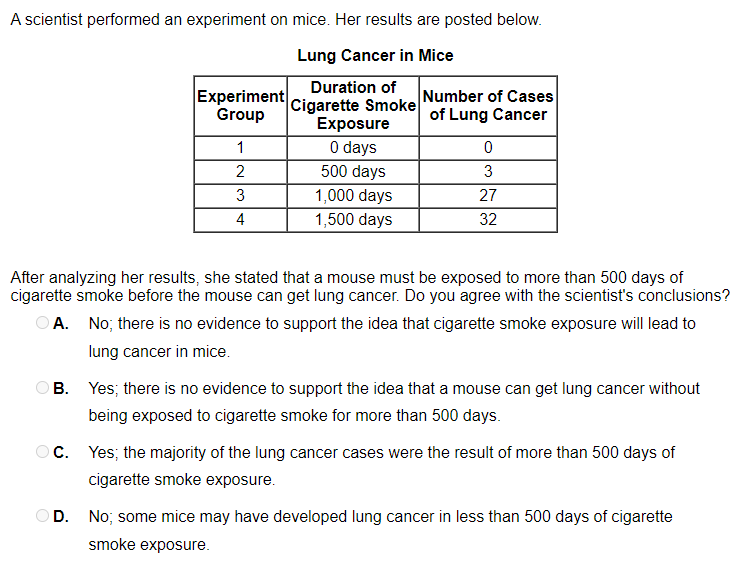
D. No; some mice may have developed lung cancer in less than 500 days of cigarette smoke exposure.
The part of an experiment that the scientist decides to change.
Independent Variable
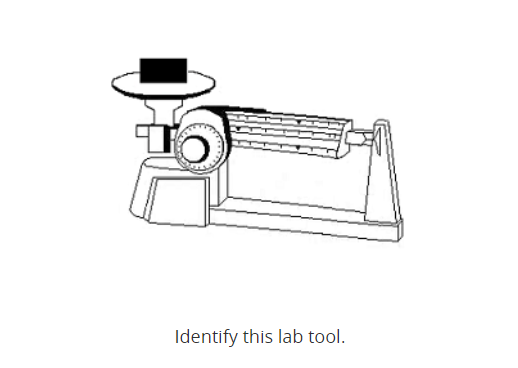
What is a balancing scale?
Renee has just completed her experiment for biology lab and cleaned up her lab area. The bell rings for her to go to her next class. What should Renee do before she leaves the laboratory?
A. put all chemical waste bottles in the trash can
B. tie back her hair if it is longer than shoulder-length
C. wash her hands thoroughly with soap and water
D. put on her safety goggles and lab coat
C. wash her hands thoroughly with soap and water
A biologist is conducting an experiment to determine how light affects the reproduction of Bacteria X. The biologist is trying to decide the best way to conduct his experiment in order to collect meaningful data.
Which of the following experiments would help him collect the best data?
A. Place a Petri dish with Bacteria X in a lighted area and a Petri dish with the Bacteria X in a darkened area, and then observe the rate of reproduction over time.
B. Place a Petri dish with Bacteria X in a sunny window and an identical Petri dish under a grow lamp.
C. Place a Petri dish with Bacteria X in a lighted area and a Petri dish with Bacteria Y in a darkened area, and then observe the rate of reproduction over time.
D. Place a Petri dish with Bacteria X in a moist, dark area and record the rate of reproduction over time.
A. Place a Petri dish with Bacteria X in a lighted area and a Petri dish with the Bacteria X in a darkened area, and then observe the rate of reproduction over time.
A type of graph that allows us to demonstrate the relative "sizes" of different groups of data (typically through blocks) 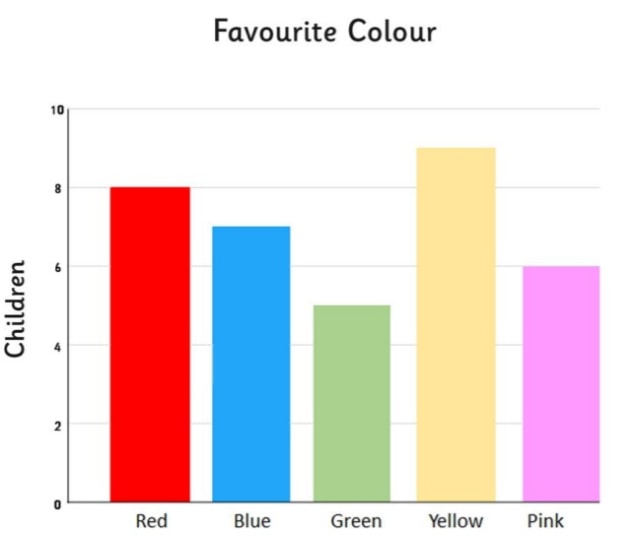
Bar graph
Kyle does an experiment to test the effectiveness of a new type of fertilizer. He predicts that the fertilizer will make plants grow twice as fast as they would without the fertilizer.
After the experiment is complete, Kyle's collected data show that the fertilizer only worked 60% of the time. Kyle decides to remove the data that contradicts his prediction from his published results so that his published conclusion will show that the fertilizer is 100% effective.
The published results of Kyle's experiment
A. are valid because the fertilizer was over 50% effective.
B. are valid because scientists should always throw out contradictory data.
C. are invalid because they are based on incomplete data.
D. are invalid because experiments cannot be done on plants.
C. are invalid because they are based on incomplete data.
The part of the experiment that the scientist is going to observe or measure (changes in response to other things changing).
Dependent Variable

What is a beaker?
Which of the following students is best practicing laboratory safety?
A. Hannah puts her long hair up in a ponytail before lab begins.
B. Steven washes out a beaker to drink water out of during lab.
C. Jake puts socks on underneath his flip-flops before lab begins.
D. Rachel opens and consumes a package of candy during lab.
A. Hannah puts her long hair up in a ponytail before lab begins.
Christopher is given identical volumes of two different solutions. He hypothesizes that solution A has a higher water concentration than solution B. Which experimental design would best allow him to test his hypothesis?
A. Use litmus paper to test the acidity and basicity of solution A and solution B. Make note if the paper turns red or blue.
B. Place five drops of vegetable oil in solution A and five drops of mineral oil in solution B. Make note if the oils sink or float.
C. Mix solution A and solution B together in a large graduated cylinder. Measure the mass and the total volume of the combined solutions. Make note of the density of the combined solutions.
D. Place solution A in a membrane that is permeable to water. Then, place the membrane full of solution A into a beaker full of solution B. Make note of the direction in which water flows.
D. Place solution A in a membrane that is permeable to water. Then, place the membrane full of solution A into a beaker full of solution B. Make note of the direction in which water flows.
True or False: Data is collected by making inferences that can later be interpreted and analyzed to form conclusions about an experiment.
False.
Kelly hypothesizes that if she waters a fig tree seedling, it will grow twice as fast as an unwatered seedling. Which of the following steps would compromise her experiment?
1. Plant two fig tree seedlings of the same age
2. Water one of the seedlings three times a week
3. Apply fertilizer to the other seedling three times a week
4. Measure the seedlings growth weekly
5. Report her results
A. Step 2
B. Step 4
C. Step 3
D. Step 1
C. Step 3
The part of the experiment that the scientist decides to keep the same for all trial groups.
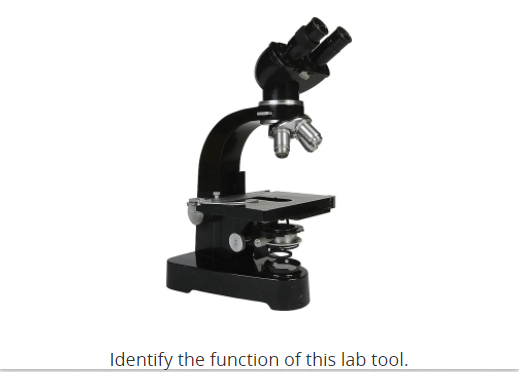
What magnifies tiny objects invisible to the naked eye?
Dr. Jones, a botanist, observes that flowers of the same species express a slightly different shade of red coloring based on where the plants are located within her greenhouse. She hypothesizes that the more sunlight the flowers receive, the darker red the petals of the flower become.
What will Dr. Jones most likely do next in order to gain scientific knowledge about this phenomenon?
A. develop an experiment to test her hypothesis and produce data
B. publish her hypothesis in a journal without experimental data
C. interpret her hypothesis without performing an experiment or gathering data
D. analyze data from a previous experiment on a different species of flower
A. develop an experiment to test her hypothesis and produce data

C. At 25 °C, at least 15 mg of Cykick will eliminate egg production in bark scorpions.
Tyler has mixed two different solutions. Both of the solutions are bases. Tyler would like to determine which of the bases makes the most effective cleaning product. He designs the following experiment:
Place the bases in separate spray bottles.
Use the first base to clean a dirty kitchen sink.
Use the second base to clean a tub.
Rate how well each base cleaned the surfaces.
Report the results.
In looking at Tyler's experiment, what did he do wrong?
A. He didn't collect quantitative data.
B. He didn't compare the base solutions to acid solutions.
C. He didn't test the bases on the same type of surface.
D. He didn't perform the experiment inside of a laboratory.
C. He didn't test the bases on the same type of surface.
Scientific _______ are logical conclusions that are drawn from scientific observations.
A. phenomena
B. hypotheses
C. inferences
D. data
C. inferences
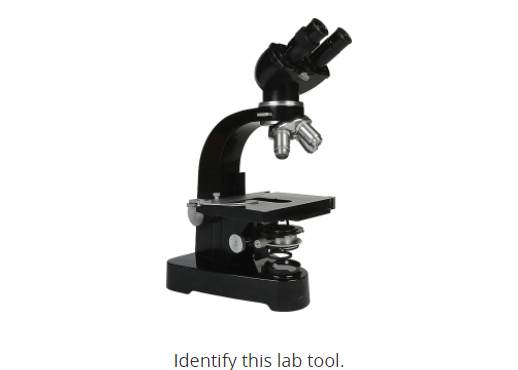
What is a microscope?
Suppose a scientist wants to test the effects of a pesticide on mice, so he tags nearby families of wild mice. In each nest, he assigns some mice to the control group and some to the test group. He takes pictures of the mice and measures them. Then, he gives small doses of the pesticides to the mice in the test group. He returns regularly to make observations.
What is a probable source of error for this experimental design?
A. The scientist's results were biased by his expectations.
B. The scientist could not control the environment of the wild mice.
C. The scientist could not control the dose given to the wild mice.
D. The scientist did not use a control group in the experiment.
B. The scientist could not control the environment of the wild mice.
When conducting an experiment, which of the following may be useful when collecting and recording scientific data?
I. drawing
II. tape recorder
III. lab notebook or journal
IV. data table
A. I, III, and IV only
B. I, II, III, and IV
C. III only
D. IV only
B. I, II, III, and IV

A. Yes, the graph shows that the rate of photosynthesis increases with light intensity up to a point.
Information gathered through either natural human senses or with the help of tools or machines.
Observation
Ricardo is using a polymerase chain reaction to quickly make copies of a segment of DNA. Ricardo needs to measure an exact amount of solution in order to place the solution in a test tube with the DNA that is to be copied. Which of the following tools should Ricardo use to measure the solution?
A. micropipette
B. a second test tube
C. scale
D. measuring cup
A. micropipette
How is a scientific hypothesis best evaluated?
A. by polling scientists in the related discipline and generating a consensus
B. by polling random members of the public for agreement
C. by comparing it to other scientific hypotheses for agreement
D. by comparing it to the results of a controlled experiment designed to test the hypothesis
D. by comparing it to the results of a controlled experiment designed to test the hypothesis
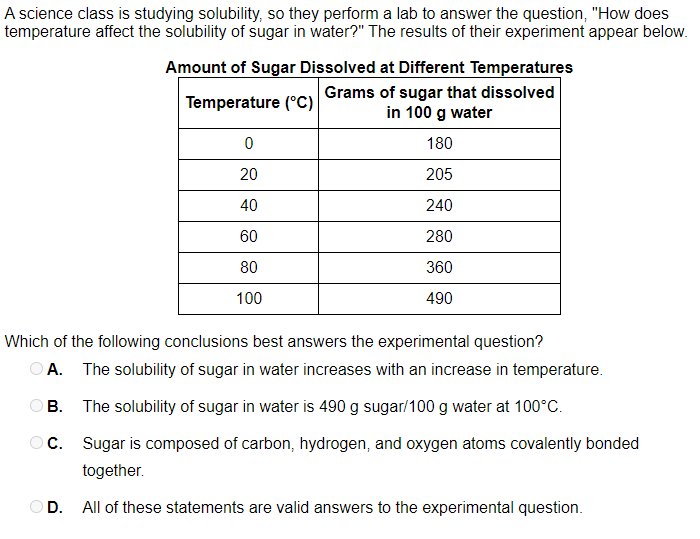
A. The solubility of sugar in water increases with an increase in temperature.
A scientist discovered a new antibiotic and wanted to know if it would be effective against group A Streptococcus bacteria. He designed a test experiment in a lab with ten different cultures of the bacteria. He introduced the antibiotic into five of the cultures, leaving the other five to grow without it. He recorded observations every three hours for a week.
What is the independent variable in this experiment?
A. the reaction of the bacteria to the antibiotic
B. the presence of the Streptococcus bacteria
C. the total number of bacteria cultures
D. the presence of the new antibiotic
D. the presence of the new antibiotic
In a controlled scientific experiment, the _____ can often be thought of as the "cause" while the _____ can often be considered as the "effect".
Independent Variable and Dependent Variable

Option D
Alicia would like to determine the effect of epinephrine on a fish's heart rate. Alicia designs the following experiment:
Select a fish for the experiment.
Measure the fish's heart rate.
Inject the fish with epinephrine.
Measure the fish's heart rate again.
Record the results.
In looking at Alicia's experiment, what is wrong?
A. She should have tested the effect of other hormones as well.
B. She didn't use a second fish as a control.
C. She didn't determine what a fish's normal heart rate is.
D. She shouldn't have measured the fish's heart rate twice.
B. She didn't use a second fish as a control.
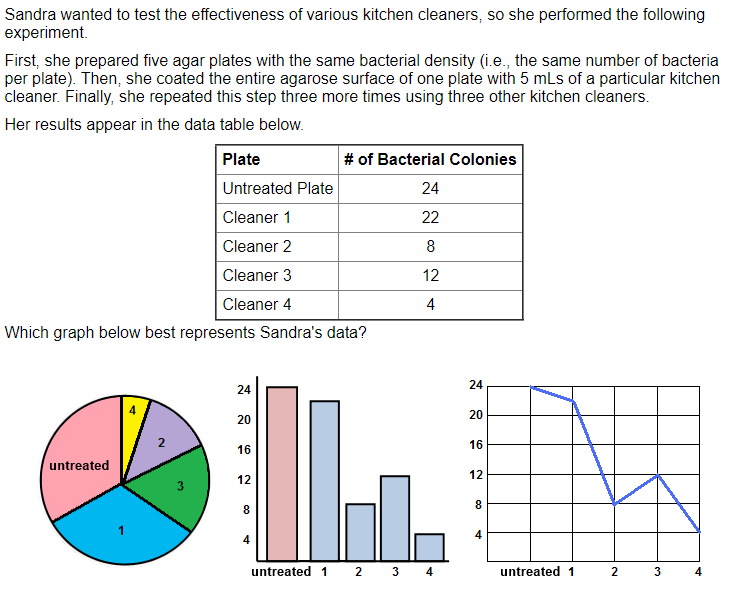
Annie wants to find out if having a substance dissolved in water changes the temperature at which the liquid boils. She prepares two samples of water with equal volumes. She dissolves 3.0 grams of salt in the first sample, and uses the second sample of pure water for a control group. She then heats each sample until it boils and records the temperature while it is boiling.
Which of the following is the dependent variable in this experiment?
D. the temperature at which the liquid boils